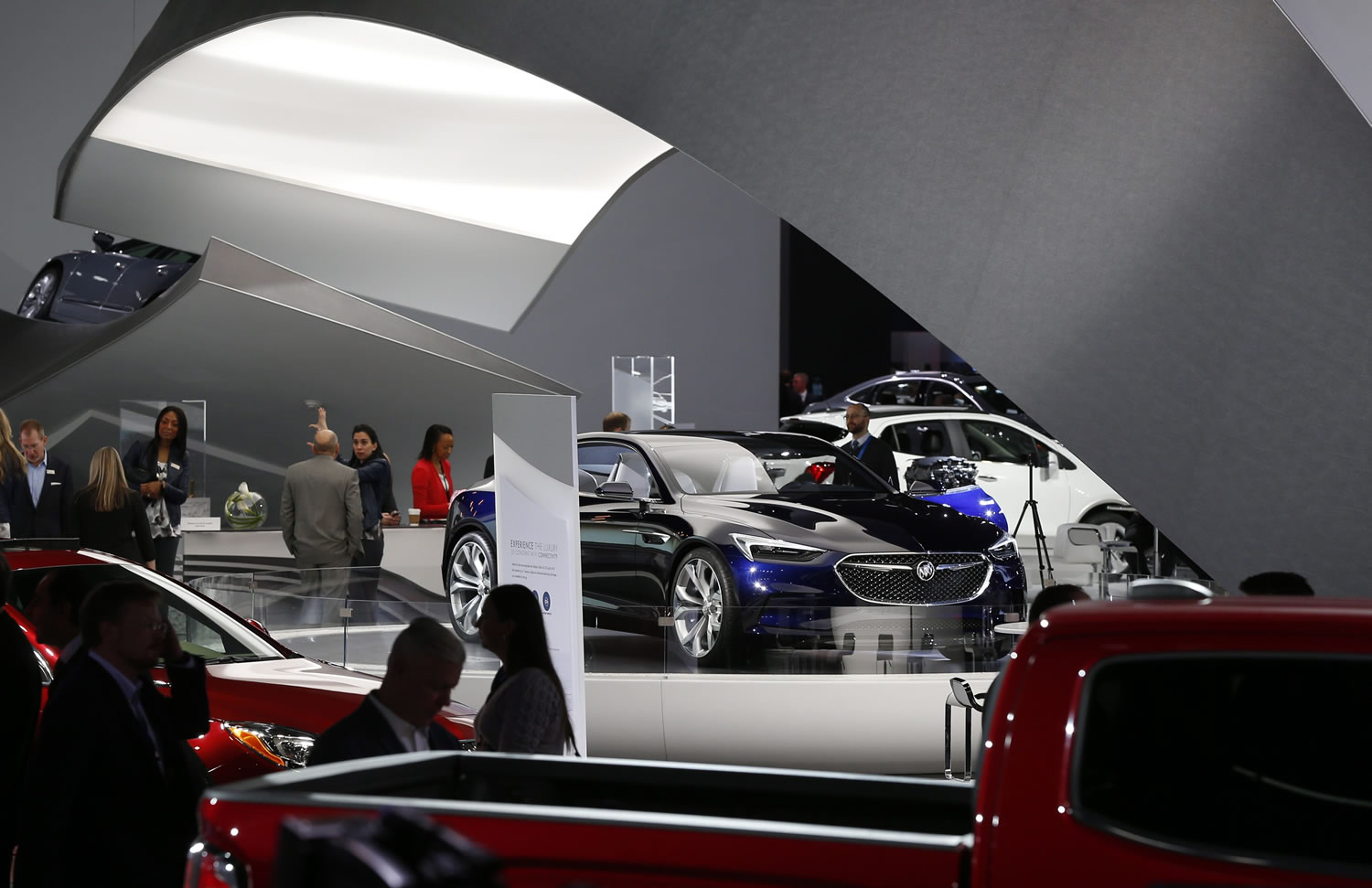DETROIT — The North American International Auto Show opens to the public Jan. 16 in Detroit. Here are some of the things we learned at this week’s media preview:
• Sales plateau
The auto industry set a record for sales of 17.5 million in the U.S. last year, capping six straight years of growth. Now, industry insiders say the U.S. market is starting to plateau, with many forecasts calling for a similar level of sales this year.
Mike Jackson, CEO of AutoNation, the country’s biggest dealership chain, is one of those saying sales will flatten out. He looks at the high levels of inventory and the incentives being offered to car buyers and sees signs of a slowdown. Jackson is already reducing his new vehicle orders and cutting back on marketing.
He says a plateau with sales at record levels isn’t a bad thing. The issue is how automakers deal with prosperity. If, for instance, they don’t control production, they could build too many cars that people don’t want and then have to discount them.
“We won the Super Bowl. We can be here for a while. You just have to manage it differently,” Jackson said.
• Fuel economy
U.S. fuel economy standards — or CAFE standards, for corporate average fuel economy — are scheduled to rise to a fleetwide average of 54.5 miles per gallon in 2025. The regulations, which were put in place in 2012, call for a review that begins this year and ends in 2018.
Some automakers are starting to question the standards. They were put in place when gas prices were steadily above $3 a gallon. Now that gas is hovering around $2 per gallon, car companies are having a hard time selling fuel-efficient small cars, hybrids and electrics. Sales of the most popular hybrid, the Toyota Prius, fell 11 percent in 2015.
“I think we need to take a step back and say, ‘OK, here’s what the assumptions were, and how have the assumptions now changed, as we go forward?,’ ” said Jim Lentz, Toyota’s U.S. chief. “If they haven’t changed, we ought to leave the standards where they are. If there are material things that have changed, we should look at what impact that has on consumer behavior, and then decide if the standards need to change.”
Nissan-Renault CEO Carlos Ghosn says the technology to meet the mandates already exists, but not at a price consumers are willing to pay. Fiat Chrysler will spend $10,000 more per vehicle to make the plug-in hybrid version of its new Chrysler Pacifica minivan, AutoNation’s Jackson said, but he’s not sure the company can convince buyers to pay that much more for it.
• Gas alternatives
Ninety-five percent of vehicles sold in the U.S. are gas-powered. But with stricter fuel economy standards looming — and memories of $4 per gallon gas not so long ago — automakers continue to develop alternatives to gas-powered cars. Audi and Lexus both showed zero-emission hydrogen fuel cell prototypes; Lexus said it could build the LF-FC sedan as early as 2020. Volkswagen showed a plug-in hybrid Tiguan SUV concept in Detroit after unveiling the all-electric Budd-e concept van at last week’s CES show in Las Vegas. Fiat Chrysler’s plug-in hybrid version of the Pacifica is a first for the minivan segment. And Chevrolet showed the all-electric Bolt, which can go for 200 miles on a charge and will cost around $30,000 when it goes on sale later this year.
Ford showed updated versions of its Fusion hybrid and plug-in hybrid cars. Executive Chairman Bill Ford said there’s less demand for alternative-fuel vehicles when gas prices are so low, but automakers should still make them.
“It’s still a cost to people, fuel is, and I think anything we can do to bring the cost of owning a vehicle down is the right thing to do. Clearly in an era of high gas prices it’s more dramatic, but it still makes sense,” he said.
• Luxury
Luxury sales made up about 13 percent of the U.S. market in 2015, up 1 percent from five years ago. Daimler AG Chairman Dieter Zetsche said he expects a little more growth this year, partly because of the huge number of millennials entering the market and also because luxury makers like Daimler’s Mercedes-Benz are offering lower-priced models. But the growth will be modest, he says. That means luxury makers will be duking it out to get noticed and buyers will likely see some deals on luxury cars.



